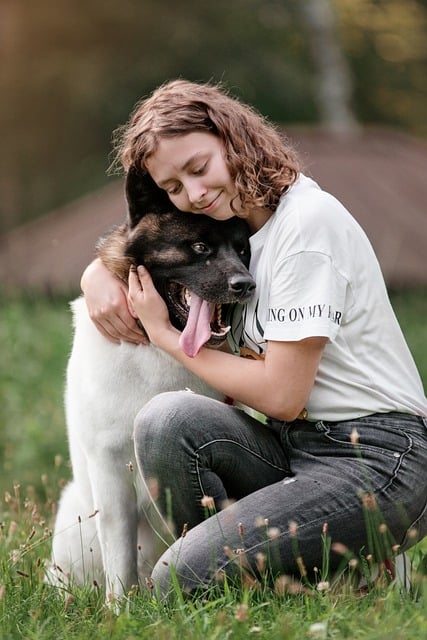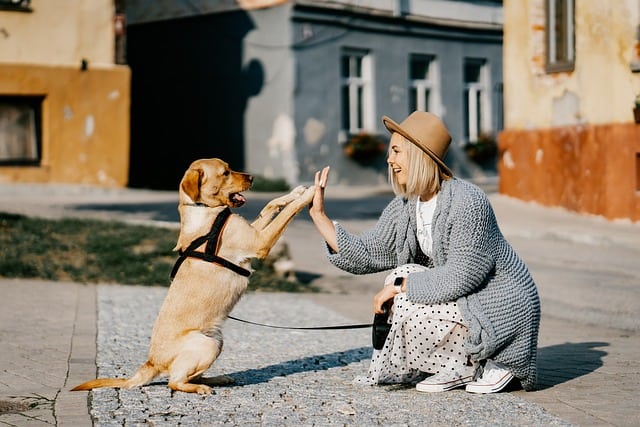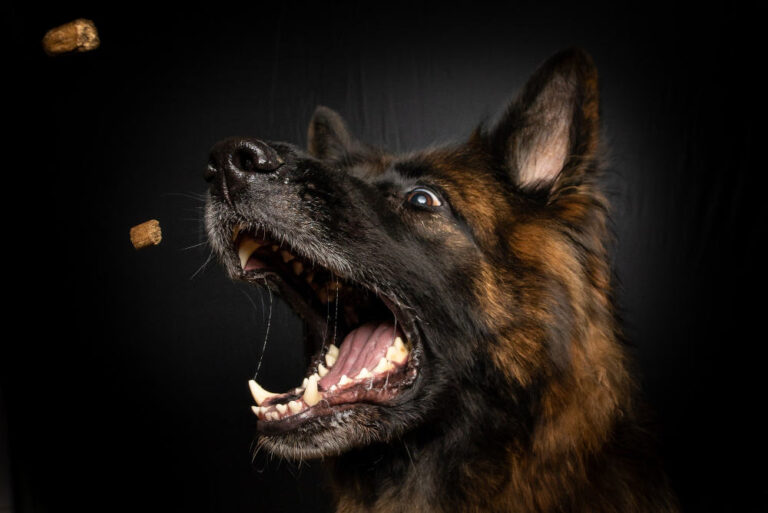Can a Dog Imprint on More Than One Person? Explained

When it comes to the special bond between a dog and their human, we often think of that one person who is their “person.” But can a dog imprint on more than one person? We’ll explore the concept of imprinting in dogs and whether or not they can form strong attachments to multiple individuals.
We’ll also delve into the factors influencing a dog’s ability to bond with different people and how this understanding can help us build better relationships with furry friends. So, if you’re curious about the complex dynamics of canine-human connections, grab a leash, and let’s dive in!
Contents
- Understanding the Concept of Imprinting in Dogs
- The Science Behind Canine Imprinting
- Can a Dog Imprint on More Than One Person?
- Factors Influencing Multiple-Person Imprinting in Dogs
- How Does a Dog Imprint on a Human?
- The Stages of Dog Imprinting
- Identifying Signs of Dog Imprinting
- Encouraging Healthy Imprinting in Dogs
- Does the Dog’s Age Affect Its Ability to Imprint?
- Conclusion
Understanding the Concept of Imprinting in Dogs

Dog imprinting is a crucial aspect of socialization during puppyhood. It allows dogs to form strong bonds with their caretaker and family members, choosing a special person to connect with on a deeper level. This imprinting process occurs in the early weeks of age when puppies form attachments to the source of food and care.
Imprinting helps dogs develop empathy and establish strong social bonds, reflecting their innate nature as pack animals. Dogs display their deep emotional connection and loyalty by imprinting on their favorite person and considering them as a family member. Imprinting is a unique trait of precocial species like dogs, enabling them to become our beloved fur babies.
The Science Behind Canine Imprinting
Imprinting is a natural process observed in many mammals, including dogs. During the dog imprinting stage, when puppies are highly receptive to new environments and experiences, their brains release oxytocin, a bonding hormone, during social interactions.
This hormone plays a crucial role in bonding with their human imprinting stage. Imprinting occurs through eye contact, physical affection, and positive reinforcement, allowing the dog to learn body language and social cues from their special person.
Dogs are pack animals and view their human as a family member. Imprinting helps dogs form strong bonds and view their humans as fur babies.
Can a Dog Imprint on More Than One Person?
Dogs can imprint on more than one person, forming strong social bonds with multiple family members. B breed, socialization, and temperament influence the likelihood of imprinting on multiple people. Imprinting dogs may display unique behaviors and affection towards each person they imprint on.
Dogs can form strong bonds with multiple family members while still having a favorite person. Loyalty, affection, and protective behavior are commonly observed in dogs that imprint on more than one person.
Factors Influencing Multiple-Person Imprinting in Dogs
Several factors can influence a dog’s ability to imprint on more than one person.
- One such factor is the breed of the dog. Some breeds are naturally more social and prone to forming strong bonds with multiple individuals.
- On the other hand, certain breeds may be more inclined to imprint on a single person.
- Another factor is socialization. Dogs exposed to various people and experiences from an early age are more likely to develop the ability to imprint on multiple persons. This early socialization helps them feel comfortable and secure with different individuals.
- Additionally, a dog’s temperament plays a role in their ability to imprint on more than one person. Dogs with outgoing, friendly, and adaptable temperaments tend to form strong connections with multiple individuals.

How Does a Dog Imprint on a Human?
Dog imprinting on a human occurs in stages, starting with the pup imprinting on littermates and the mother dog. It then imprints on a human as the puppy explores the larger world. This process helps dogs develop strong bonds and differentiate between family members and strangers.
The Stages of Dog Imprinting
During the stages of dog imprinting, several significant milestones occur. First, there is the fear imprinting stage that takes place in puppyhood. This is when dogs imprint fears of specific stimuli, such as loud noises.
Then, there’s the canine imprinting stage, usually around 8-10 weeks of age. During this time, dogs form a strong bond and imprint on their human caretakers, family members, and even new environments. During these crucial imprinting stages, dogs develop important socialization skills, fear responses, and a deep connection with their human family members.
However, if the imprinting process is disrupted or not properly nurtured, it can result in distress, separation anxiety, and fear of new environments. Therefore, proper imprinting is essential for a dog’s social, emotional, and behavioral well-being.
Identifying Signs of Dog Imprinting
Here are some signs that your dog has imprinted on you:
1. Following you around: Your dog may exhibit a strong desire to be near you at all times. They will follow you from room to room, always wanting to be beside you. This behavior is a clear sign that they have imprinted on you as their special person.
2. Seeking physical contact: Imprinted dogs often seek physical contact with their special person. They may lean against you, nudge your hand for pets, or curl up next to you for cuddles. This physical closeness reinforces the bond between you and your dog.
3. Displaying separation anxiety: When an imprinted dog is separated from their special person, it may exhibit signs of distress and anxiety. They might whine, bark excessively, or even engage in destructive behavior. This separation anxiety results from their strong attachment and imprinting with their human caretaker.
4. Mirroring your behaviors: Imprinted dogs often mirror their special person’s behaviors. They may imitate your movements, gestures, and even facial expressions. This mirroring behavior is a clear sign of the deep connection they have formed with you through the imprinting process.
5. Following your commands more than others: Imprinted dogs prioritize their special person’s commands over others. They have a strong desire to please and will eagerly follow your instructions. This obedience is a testament to the bond and trust established through imprinting.
6. Checking in Imprinted dogs have a habit of regularly checking in with their special person. Whether through eye contact, nudging your hand, or staying close by, they want to ensure they are always aware of your presence. This constant need for reassurance and connection indicates their imprinting on you.
7. Seeking out affection: Imprinted dogs have an insatiable need for affection from their special person. They will seek out cuddles, belly rubs, and snuggles whenever possible. This constant craving for physical affection results from their deep imprinting and attachment to you.
8. Exhibiting jealousy: Imprinted dogs may display jealousy when they see you giving attention to someone else. They may try to insert themselves between you and the other person or even become vocal or pushy to regain focus. This possessiveness stems from their strong imprinting and desire to be the center
Encouraging Healthy Imprinting in Dogs

To encourage healthy imprinting in dogs, starting socialization and imprinting during puppyhood is essential.
Expose your dog to various people, environments, and experiences to help them become well-rounded pack animals.
Providing positive, consistent, and affectionate interactions with your dog is crucial to fostering imprinting and bond formation.
Use positive reinforcement training methods, rewards, and treats to reinforce the dog’s bond with family members.
Engage in physical affection, eye contact, and body language that indicate affection, trust, and social bond.
Regular, positive interactions will encourage the dog’s socialization, imprinting, and bond formation with family members, making them feel like valued family members.
Does the Dog’s Age Affect Its Ability to Imprint?
A dog’s age can affect its ability to imprint, but dogs can still form new imprints at any age. Puppyhood is a critical stage for imprinting, while older dogs may take longer to develop new imprints. Proper socialization and bonding techniques can help dogs of any age create positive imprints with multiple family members.
Conclusion
Dogs are capable of forming strong bonds with multiple people. While imprinting is often associated with a single attachment, dogs can form deep connections with several individuals. Socialization, training, and individual temperament influence this ability to bond with multiple people. It’s important to remember that dogs are adaptable creatures who can thrive in various social environments. So, if you’re worried that can a dog imprint on more than one person, rest assured that they have the capacity for multiple loving relationships.
Source:- https://www.rover.com/blog/signs-dog-imprinted-on-you






